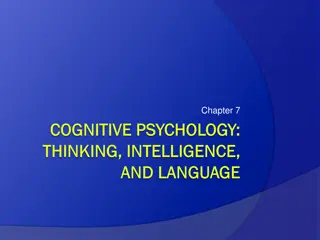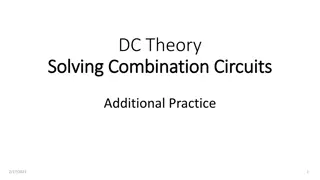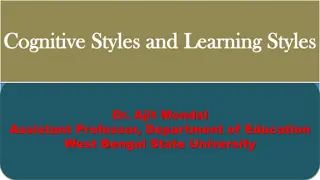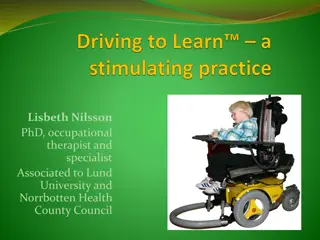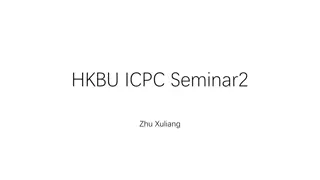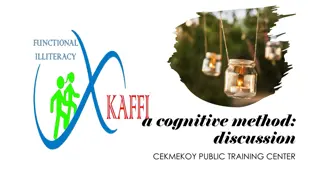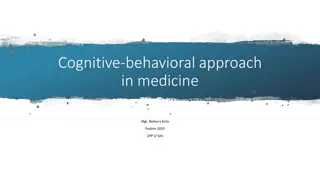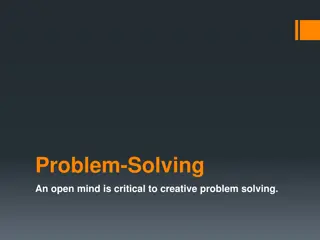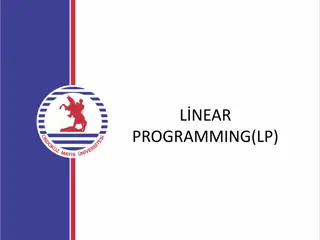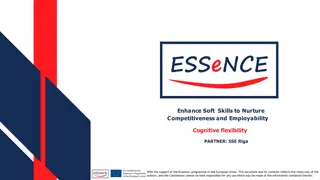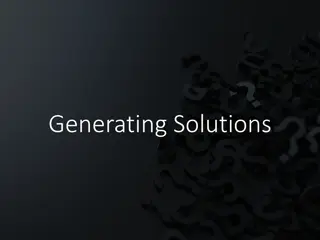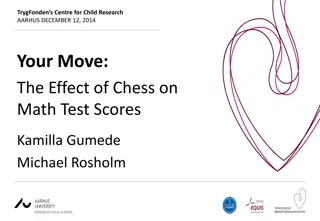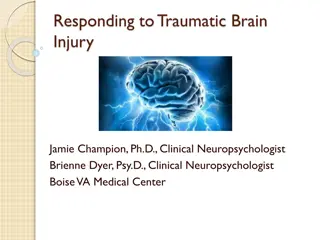Cognitive Problem-Solving Techniques in Everyday Situations
This review touches on various aspects of problem-solving scenarios, including educational philosophies by Lockhart and Kaphur, the Solomon method in hot dog eating contests, the Wright brothers' aviation pioneering, and obstacles like functional fixedness in problem-solving. It challenges readers to apply cognitive techniques in real-life situations.
Download Presentation

Please find below an Image/Link to download the presentation.
The content on the website is provided AS IS for your information and personal use only. It may not be sold, licensed, or shared on other websites without obtaining consent from the author. Download presentation by click this link. If you encounter any issues during the download, it is possible that the publisher has removed the file from their server.
E N D
Presentation Transcript
Unit 9: Ungraded review questions
Can you explain your answer? Use your fingers to indicate your answer: 1=A, 2=B, 3=C, 4=D. After viewing the question, show me your answer in 15 seconds. Next, turn to your neighbor and you have one minute to convince him/her that you are right.
According to the philosophy of education proposed by Paul Lockhart and Kaphur, a good teacher should A. provide as many guidelines as possible to the students so that they can follow each procedure step by step. B. encourage students to solve problems based on the methods of Gestalt psychology. C. reinforce learning according to Skinnerian behaviorism. D. present ill-defined problems to students and let them learn from failures and misconceptions.
The world champion of hot dog eating uses the Solomon method to beat his rivals in almost every contest. He conceptualizes the problem as how hot dogs can fit into the stomach. This example demonstrates that A. people arrive at the solution to an insight problem suddenly, but proceed more methodically towards the solution of a non-insight problem. B. a person's mental set can hinder finding a solution to a problem. C. people often have to backtrack within the problem space to arrive at an answer to a problem. D. the way the problem is represented can influence the ease of problem solving.
Lee and Shea (2018) wrote, Have you ever thought about where the Wright brothers, the aviation pioneers, found the solutions to the problem of flight? They acquired their first idea by observing how birds control their wings. As in many engineering processes, failures occurred. The Wright brothers built numerous prototypes in various sizes to test different components. They performed many trials and made repeated changes after each failure before they could claim even partial success. They had to develop the wings, the motor, the struts, the seating, the balance and the relationships between each of the components before the development of their first airplane. This is an example of: A. Insight problem-solving B. Divergent thinking C. Counterfactual reasoning D. Non-insight problem solving
Holly was in her mother-in-law's kitchen preparing lunch for the family. When she was ready to dish up the soup, she searched all the cupboards and drawers for a ladle but couldn't find one. She decided to wait until her mother-in-law returned to ask her where the ladle was, leaving the soup in the stove pot. Her mother-in-law later explained that the ladle had been broken, so she told Holly to use a coffee mug to "spoon" the soup into bowls. Holly's ability to solve the "dish up the soup" problem was hindered by which of the following obstacles? A. Discriminability B. Perseveration C.Divergent thinking D. Functional fixedness
Which of the following statements does NOT apply to the results of research on differences between how experts and novices solve problems? A. Experts possess more knowledge about their fields than novices. B. Experts often organize problems differently than novices, based on principles. C. Experts often spend more time analyzing problems than novices. D. Being an expert in one field can transfer to better problem solving in another field.
Ali works for Citrus Squeeze, a company that makes orange juice. Sales of their calcium-enhanced OJ have been poor, and the product was cancelled. His factory still had three cases of cartons, and Ali was told he could take them if he wanted them. With the cartons, Ali made several birdfeeders for his backyard and also planted tree seedlings in some of them; he used the remaining ones to build a "fort" for his four-year-old son. Ali's use of the cartons represents A. convergent thinking. B. divergent thinking. C.insight. D. hierarchical organization





